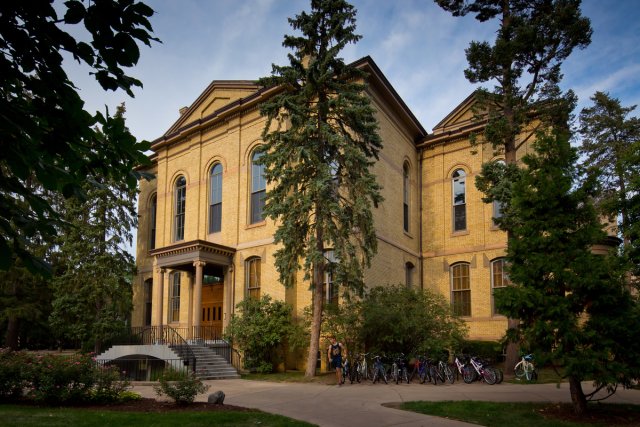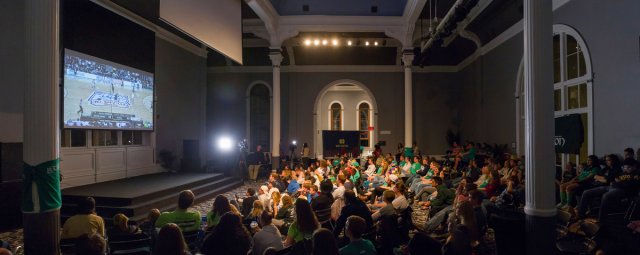







The building was originally conceived in 1883 as the Science Hall under the direction of Fr. John Zahm and hosted classrooms and laboratories.
In 1953 it was transformed into the Student Center. Today LaFortune Hall, commonly known as "LaFun", serves as the hub of student activities and hosts eateries, social spaces and offices for Student Government and other clubs.
Work on Science Hall was begun early in 1883. The cornerstone was the gift of John B. Cassidy of the class of 1865, the first student to receive a Bachelor of Science degree from Notre Dame. Edbrooke, the architect for the Main Building, was retained to design the new structure.
The development of Sciences at Notre Dame is largely credited to Fr. John Zahm, C.S.C (pictured above), who inspired the University's first flowerings in research.
This building was the fruit of Father Zahm's careful study. He ensured that laboratories were provided for physics, chemistry, botany, physiology, zoology, geology, mineralogy, mechanical engineering, and photography. Also included in the building was a museum for the display of various scientific specimens.
In 1953 the Science Hall was converted into Notre Dame’s first student center, thanks to a generous gift from Joseph LaFortune, a South bend native and Notre Dame alumnus who had made his fortune in the Oil Industry in Tulsa. Ever since, it has served the need of the student body and is one of the most popular spots on campus.
Father John Zahm, C.S.C. (1851-1921)
Born in Ohio, John Augustine Zahm joined the Holy Cross fathers after graduating from Notre Dame and was ordained a priest in 1875. Zahm was hired by the University of Notre Dame as a science teacher although he had interest in literature. He recognized the growing influence of modern science on the world—a force leading to atheism, agnosticism, and skepticism among scholars and students. Father Zahm wanted to show academia, and the world at large, “that there is nothing in evolution, properly understood, which is contrary to Church Doctrine.” He authored several books on science and religion, as well as his scientific travels. In 1895, he was recognized as Doctor of Philosophy by Pope Leo XIII. In 1896, he published a book entitled "Evolution and Dogma", arguing that Church teaching, the Bible, and evolution did not conflict.
He was an enthusiastic student of Dante and assembled at Notre Dame one of the three largest Dante libraries in America. From 1898 to 1906 he was provincial of the congregation.
Zahm befriended Theodore Roosevelt, the 26th President of the United States, who also loved to read Dante in Italian. It was Father Zahm who talked President Roosevelt into participating in what came to be known as the Roosevelt-Rondon Scientific Expedition to South America in 1913, which turned into a near disaster and almost killed Roosevelt. Throughout his life Zahm collected maps, photographs, relics, and curios pertaining to South America.


